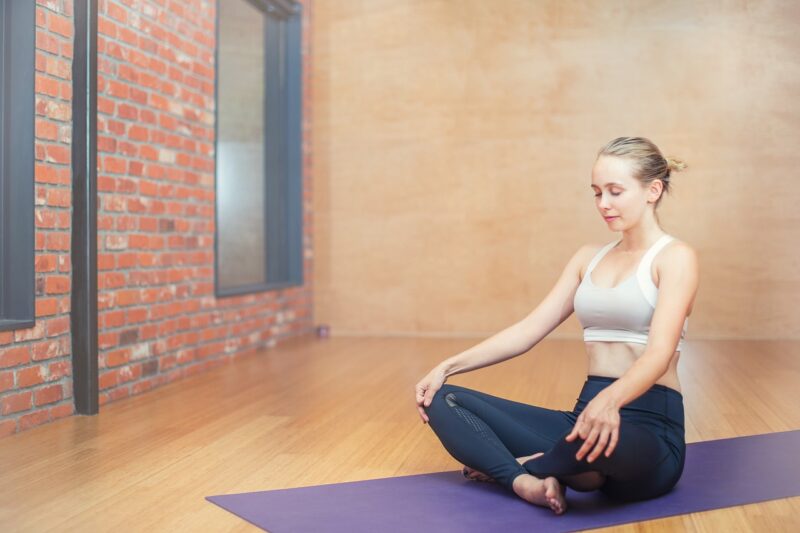How Simple Mindfulness Practices Can Improve Focus and Reduce Stress
November 16, 2024

In our fast-paced, hyper-connected world, it is becoming increasingly difficult to maintain focus and reduce stress. The demands of daily life can leave us feeling overwhelmed, anxious, and unfocused. Fortunately, mindfulness practices are emerging as an effective way to combat these challenges, helping people regain their concentration and promote inner peace.
Mindfulness is the practice of being fully present and engaged, aware of your thoughts and feelings without judgment. This concept, rooted in ancient meditation traditions, has been shown to significantly enhance mental clarity, emotional well-being, and stress reduction.
In this article, we will explore simple mindfulness techniques that anyone can incorporate into their daily routine to improve focus and alleviate stress.
1. The Benefits of Mindfulness
Before we dive into specific practices, let’s discuss the numerous benefits that mindfulness can offer:
- Enhanced Focus: Mindfulness teaches us to redirect our attention, which can ultimately lead to improved concentration and productivity in both personal and professional settings.
- Stress Reduction: Engaging in mindfulness practices lowers levels of stress hormones, helping to cultivate a sense of calm even amidst chaos.
- Emotional Resilience: Mindfulness can foster a greater understanding of our emotions, enabling us to respond thoughtfully rather than react impulsively to challenging situations.
- Improved Interpersonal Relationships: By enhancing our ability to listen and empathize, mindfulness can strengthen personal and professional relationships, leading to less conflict and greater connection.
These benefits can profoundly enhance our quality of life, making mindfulness an invaluable tool for navigating today’s complex world.
2. Simple Mindfulness Practices to Get Started
Now that we understand the significance of mindfulness, let’s discuss some simple practices that can be easily integrated into your routine.
A. Mindful Breathing
Mindful breathing is one of the most straightforward mindfulness techniques. You can practice this anywhere and at any time. Here’s how:
- Find a comfortable position, either sitting or standing.
- Close your eyes if comfortable, or lower your gaze to minimize distractions.
- Take a deep breath in through your nose, counting to four.
- Feel your belly expand as you inhale.
- Hold your breath for a count of four.
- Exhale slowly through your mouth to the count of six, noticing the sensations as the air leaves your body.
- Continue this pattern for at least five minutes, refocusing your mind whenever it wanders to thoughts or distractions.
B. Body Scan Meditation
Body scan meditation is another effective way to build mindfulness. It fosters a greater awareness of your physical sensations while promoting relaxation:
- Lie down in a comfortable position, allowing your body to feel heavy against the surface beneath you.
- Begin by focusing on the tips of your toes, noticing any tension or sensation in that area.
- As you exhale, consciously relax the muscles in your toes and move your focus up to your feet, ankles, and gradually all the way to the crown of your head.
- If your mind wanders, gently bring yourself back to the body part you were focusing on, observing any tensions without judgment.
- Spend at least 10-15 minutes in this practice, working through your body systematically.
Using body scan meditation regularly can help enhance your physical awareness and promote relaxation throughout your day.
C. Mindful Walking
Walking can become a mindfulness practice when you bring your awareness to each step you take. This is perfect for those who find seated meditation challenging:
- Begin walking slowly in a quiet space, whether indoors or outdoors.
- Pay attention to how your feet feel in contact with the ground, noticing the up and down motion of your legs and how your body moves in space.
- Focus on your surroundings, taking in sights, sounds, and smells without judgment or attachment.
- If your mind begins to wander, gently redirect your focus back to your walking and the sensations it brings.
Mindful walking allows you to practice being present while benefiting from physical activity.
3. Incorporating Mindfulness into Daily Activities
Mindfulness doesn’t have to be limited to formal meditation practices. You can incorporate mindfulness into your daily activities:
- Mindful Eating: Pay attention to the taste, texture, and aroma of each bite you take while eating. Chew slowly and savor your food, which can also promote better digestion and enjoyment of meals.
- Mindful Listening: When engaging in conversations, practice active listening. Focus on the speakers without planning your response while they are speaking. Engage fully in the moment, and appreciate their words.
- Mindful Morning Routine: Begin your day with intention. Whether brushing your teeth or taking a shower, notice your movements and sensations instead of rushing through.
These simple adjustments can turn ordinary activities into opportunities for mindfulness, enhancing your awareness throughout the day.
4. Overcoming Challenges in Mindfulness Practice
Many people face challenges when they begin practicing mindfulness, whether it is difficulty focusing or self-judgment. Here are some strategies for overcoming these obstacles:
- Embrace Imperfection: Understand that thoughts will arise during practice. Acknowledge them without judgment and gently return your focus to the here and now.
- Create a Routine: Consistency is vital. Set aside specific times during your day for mindfulness practice, integrating it into your daily schedule to ensure you stick with it.
- Start Small: Instead of diving into long sessions, start with just five minutes a day. Gradually increase the duration as you become more comfortable with the practice.
With time, patience, and commitment, these challenges will become easier to navigate, leading to a more rewarding mindfulness practice.
Conclusion
Mindfulness is a powerful tool that can drastically improve focus and reduce stress when practiced consistently. By incorporating simple techniques like mindful breathing, body scan meditation, and mindful walking, anyone can cultivate a greater sense of presence and tranquility in their life.
The journey towards improved mindfulness is an ongoing process, and the benefits are well worth the effort. Start your mindfulness practice today, and watch as your focus increases and your stress diminishes. Remember, mindfulness is about progress, not perfection. Embrace each moment and find peace in the process.







